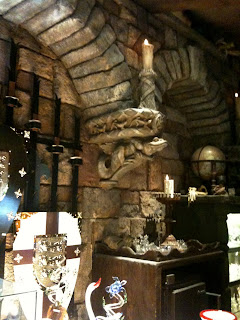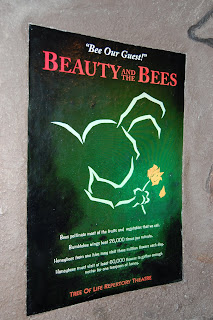The original Disney castle, Sleeping Beauty Castle at Disneyland, may be one of the smallest but it's also the most charming. Drawing inspiration from Neuchwanstein Castle in Bavaria, the castle at Disneyland was named for Sleeping Beauty, even though the Disney film based on the same story was still in production. In fact, Disney's Sleeping Beauty wouldn't come out for another four years after Disneyland's debut. That was a fairly bold move on Walt's part, using the central icon of his new park as essentially a commercial for an upcoming film release. Of course, Sleeping Beauty has since become a classic, so no one seems to mind.
Sleeping Beauty Castle has changed a bit over the years, becoming more beautiful with the addition of richer colors, textures and architectural embellishments. One of the features that's been there from the beginning, though, is the coat of arms placed above the castle entrance. The shield with the three heraldic lions is actually the Disney family crest. Since lions are also a symbol frequently associated with royalty, it works here, and the lion motif is repeated elsewhere.

Sleeping Beauty Castle is also unique in that it was designed with a functioning drawbridge. The bridge has only been raised, and ceremoniously lowered, on two occasions - for the opening of Disneyland on July 17, 1955, and for the dedication of the remodeled Fantasyland in 1983. Portions of the mechanism for raising the bridge can still be seen in the alcoves at the castle entrance, but most of the machinery that would do the job was removed during renovations in the 90s, when it was determined it would not likely be needed again.
Since this is Sleeping Beauty's castle, details and references to Aurora's story abound. Look for some of the woodland animals she befriended as Briar Rose, sculpted into the design features of the castle. In the rear courtyard, take note of the trees, squared off just as they were in the gorgeous background paintings done by Eyvind Earle for the animated feature.
The story of Sleeping Beauty is fully told via the castle walk-through. First opened in 1957, the attraction recently made a return to Disneyland after being closed for several years. Now remodeled with enhanced special effects, the Sleeping Beauty Castle Walk-Through is better than ever.
Beautifully illustrated books, similar to the one at the opening of the film, help to tell the story and lead Guests through the corridors of the castle interior. Along the way are plenty of surprises and magical touches, from the spells cast by the three Fairies to the incredible transformation of Maleficent into a fire-breathing dragon.
Of course, just as in the Sleeping Beauty film, our journey through Sleeping Beauty Castle concludes with a victory of good over evil and everyone living happily ever after to enjoy other adventures in Disneyland.


























































